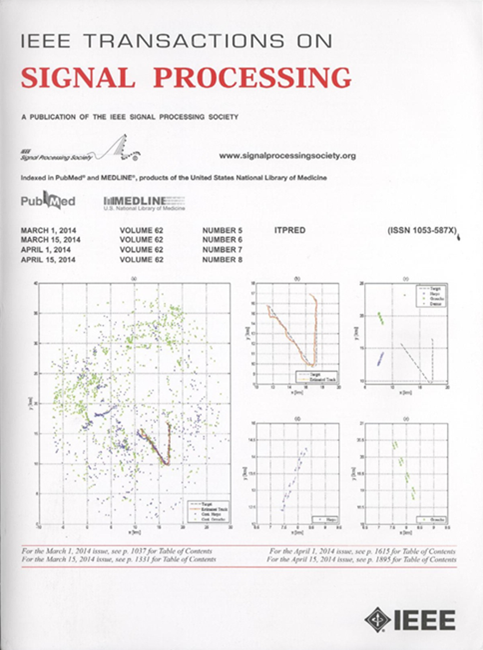石墨信号处理中的采样和唯一性集
IF 4.6
2区 工程技术
Q1 ENGINEERING, ELECTRICAL & ELECTRONIC
引用次数: 0
摘要
在这项工作中,我们利用图子和图极限理论研究了大图族上采样集的性质。我们将可移动集和唯一性集的概念扩展到图上信号,这一概念最初是为图上信号的分析而开发的。给出了$\Lambda-$可移动集的形式定义,并给出了从$\Lambda-$可移动集的补集中得到的样本唯一表示限带图形信号的条件。通过利用这些结果,我们表明图信号的图表示可以作为一个通用框架来比较具有不同节点数量和节点标记的图之间的采样集。此外,给定收敛于graphon的图序列,我们证明了其graphon表示在$[0,1]$中相同的采样集序列也是收敛的。我们利用收敛结果提供了一种算法,该算法在传统方法难以处理的大图中获得近似接近最优采样集。通过一组数值实验,我们评估了这些采样集的质量。我们的研究结果为有效计算大型图的最优采样集打开了大门,这些方法依赖于可以应用于小型图的现有方法。本文章由计算机程序翻译,如有差异,请以英文原文为准。
Sampling and Uniqueness Sets in Graphon Signal Processing
In this work, we study the properties of sampling sets on families of large graphs by leveraging the theory of graphons and graph limits. We extend to graphon signals the notion of removable and uniqueness sets, which was developed originally for the analysis of signals on graphs. We state the formal definition of a $\Lambda-$ $\Lambda-$ $[0,1]$
求助全文
通过发布文献求助,成功后即可免费获取论文全文。
去求助
来源期刊

IEEE Transactions on Signal Processing
工程技术-工程:电子与电气
CiteScore
11.20
自引率
9.30%
发文量
310
审稿时长
3.0 months
期刊介绍:
The IEEE Transactions on Signal Processing covers novel theory, algorithms, performance analyses and applications of techniques for the processing, understanding, learning, retrieval, mining, and extraction of information from signals. The term “signal” includes, among others, audio, video, speech, image, communication, geophysical, sonar, radar, medical and musical signals. Examples of topics of interest include, but are not limited to, information processing and the theory and application of filtering, coding, transmitting, estimating, detecting, analyzing, recognizing, synthesizing, recording, and reproducing signals.
 求助内容:
求助内容: 应助结果提醒方式:
应助结果提醒方式:


